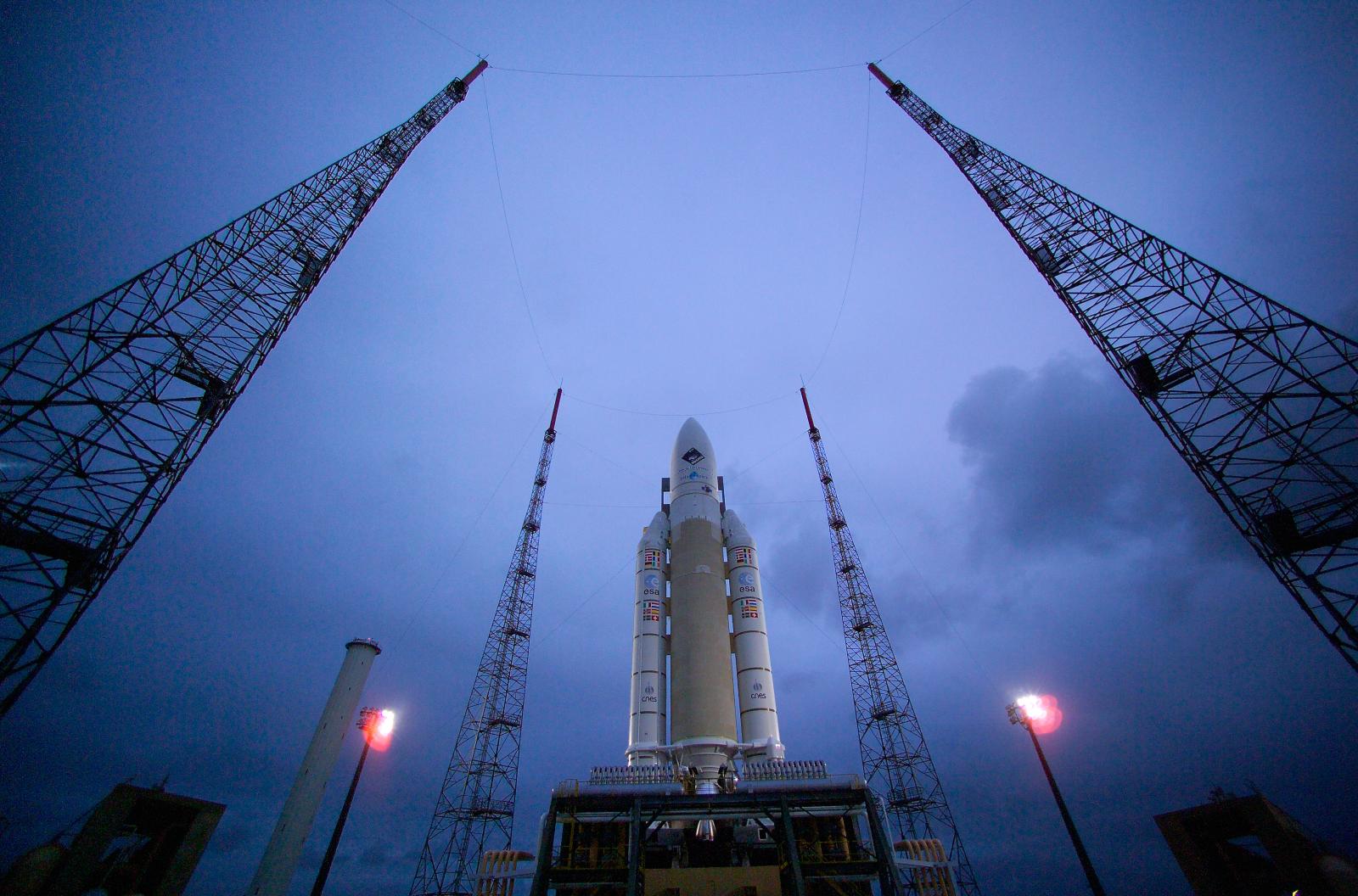Marita Cheng, founder of Robogals, Young Australian of the Year 2012 and founder and CEO of 2Mar Robotics.
Cheng’s startup company is developing Jeva, an iPhone- and iPad-controlled robotic arm and hand, designed to be mounted on a wheelchair or table to help people with limited upper-body mobility. The Jeva prototype is already enabling testers to use the robotic arm to take medication, pick up objects, open doors and even sign their names, giving greater independence to those who can’t otherwise manage such tasks.
Marita is currently developing Jeva, an iPhone and iPad controlled robotic arm to assist people with limited upper mobility.
GEreports: What’s the biggest opportunity for either your industry or the Asia-Pacific region in 2015?
Marita: There’s a really big opportunity in all kinds of robotics. There’re so many people who know how to create the software; there’s [been] a growing hardware movement over the past few years, there’re just so many building blocks out there now. So I think building robots in every single industry is an opportunity over the next year.
Also, if technologists keep thinking about the user and making the user experience better, that will make a difference, too. There are lots of amazing technologies out there that work well from a technology point of view, but if the creators thought more about the user, and tweaked it for the user, they could create an enormous opportunity for themselves.
GEreports: What technology or idea is set to disrupt your industry in 2015?
Marita: The low-cost actuators [the motors that drive any robot's movements] will make a big difference to the robotics industry, particularly the humanoid robotics industry, or the robotic arm industry. If we can get cheaper actuators, that brings down the whole cost of a robot, so rather than robots costing $40,000, they can cost $4,000, which makes it much more accessible to people.
Professor Attila Brungs, Vice-Chancellor, University of Technology Sydney (UTS).
This year has seen UTS expand its campus with three new buildings—part of its program to revolutionise both teaching and research with a new collaborative approach. At the same time its research work, including collaborations with industry, have doubled last year’s achievements, and the university has also climbed in all international rankings.

GEreports: What’s the biggest opportunity for either your industry or the Asia-Pacific region in 2015?
Attila: There are profound changes happening in universities around the world. One of the greatest opportunities in the coming year is how do we have a different business model as a university? And part of that is the new way we’re teaching, and part of that is also the new way we’re engaging with business and community. One of the priorities we have is how we can work with industry. So this year I think there’s a lot of opportunity for that—changing the way universities work externally as well as internally. Universities have always done collaboration, but I don’t think at quite the scale they need to in future. We need to get involved with industry broadly, and with government, not only in designing our research, not only in delivering what industry wants, but also, how do we deliver the graduates industry wants?
The second one is that innovation and creativity is a huge opportunity. In 2014 we launched a new course called Creative Intelligence, an innovation course, and it was massively oversubscribed. It was about how you link innovation and engineering or creativity and business, creativity in science. We’re creating a digital creative precinct here in Sydney, where we’ve got I think 50 per cent of all small creative business working within a kilometre of UTS. So the big opportunity for 2015 is how do we create a vibrant, world-class hub?
GEreports: What technology or idea is set to disrupt your industry in 2015?
Attila: The other side of opportunity is disruption. There are different ways of teaching technology. MOOCs, massive online open courses, do provide an alternative path to education. So how do we do the best of online, but also the best of physical learning? How do we blend them all together? That is going to be very disruptive, and we’re working through what we believe is the right model, but many universities are trying different things, so that’ll be quite a challenge for universities in 2015.
The second [disruption], which we’re spending a lot of time thinking about is that the nature of careers is changing, with automation, with all sorts of things. People have much more flexible careers than they did in the past, and a university’s job [has been] to prepare our students for the first couple of jobs in their field. Now we have to prepare them for the first 20 jobs because they’re likely to have 20 different jobs, even if it’s in the same company, within a fairly short time. That is very much something that we as a university need to think through: How do we prepare our students now for rapidly changing career profiles, as well as giving them skills for jobs that don’t even exist?
David Bradley, Managing Director, Gas Transport Solutions.
With the volatility of oil prices guaranteed, Gas Transport Solutions has specialised in getting reliable supplies of gas to the people, to power their endeavours wherever they may be. Among its means of bringing gas to customers: the virtual pipeline. That’s a trucking solution.

Credited by Petroleum Exploration Society of Australia (PESA)
GEreports: What’s the biggest opportunity for either your industry or the Asia-Pacific region in 2015?
David: The gas sector generally, and getting gas to markets, both in Australia and in the Asia Pacific region. It’s really a tale of two gas markets—there’s the big end of town and the little end of town.
In the big end is LNG and several emerging Asian countries are desperate for gas and running out of indigenous supplies. They will begin importing. Indonesia was at one time the biggest exporter of LNG, their supplies are falling rapidly. They’re out of OPEC now, so they’ve stopped their subsidisation of fuels, so the cost of liquid fuel products has gone up, which has driven a lot of demand to gas. It’s a great gas-import opportunity.
On the little end of town, in Indonesia in particular, the challenge is that the government controls the power plants and the gas pipelines, so they’re slow. They’re just not unfolding it and getting it to end users nearly as quickly as end users want. So there’s the little end opportunity for virtual pipelines; it’s for compressed natural gas and LNG, for trucked gas solutions. There are a lot of end users who can’t get connected, but still would pay the price, who would love to have their little puff of gas, for their industrial process or making whatever they make, or for their little power plant in their town.
GEreports: What technology or idea is set to disrupt your industry in 2015?
David: The current down-dip in oil prices will give liquid fuel consumers a false sense of comfort—and potentially lessen their urgency to seek gas alternatives. As US drilling and production decline in reaction to the current low oil prices, there will be a knock-on effect likely inflating future oil prices beyond recent years, likely leaving liquid-fuel end users wishing they had been more diligent in seeking fuel diversification.
David Hansen, CEO of the Australian E-Health Research Centre, CSIRO Digital Productivity Flagship.
His centre’s most recent triumph was the publication of results of a randomised control trial of their mobile-phone-based cardiac rehabilitation program, and the subsequent implementation of the program by health and hospital services.

GEreports: What’s the biggest opportunity for either your industry or the Asia-Pacific region in 2015?
David: The whole health area continues to be a concern to the government in terms of sustainability and cost. There’s a range of opportunities for us to be involved in helping health services to become much more efficient.
If we think about the hospital sector, which is funded through a variety of mechanisms through state and federal government, there are some real challenges to hospitals in terms of the targets that drive a lot of their funding. So the opportunity is in helping hospitals to achieve their targets, but even more so, in actually contributing to evidence-based targets, so that we’re not expecting our health services to reach a level of performance to get funding, which they can’t do without tipping over into unsafe practices, without stretching everyone. It continues to be shown that when health services are stretched, when people are run off their feet, that’s when errors do happen.
GEreports: What technology or idea is set to disrupt your industry in 2015?
David: It may be a little bit longer than 2015, but I think we’ll see [the application of] big-data technologies in general. The health system has struggled over the years to collect good data, but we’ve now got hospitals implementing electronic medical records and we’re having the personally controlled electronic health record (PCEHR). People with chronic diseases who enrolled for an electronic health record in the first few months, that’s over two years old now… they’re going to start having enough information in there that it will be useful for treatment purposes. So I think data technologies in healthcare in Australia are going to start to come more to the fore in 2015.
Ivor Frischknecht, CEO of the Australian Renewable Energy Agency (ARENA).
In 2013-14 ARENA managed $1.2 billion in support of more than 200 renewable-energy projects, fellowships and scholarships. For every dollar invested by ARENA, it attracted $1.90 in additional financial support—which generates not only clean energy, but develops local expertise and jobs.

GEreports: What’s the biggest opportunity for either your industry or the Asia-Pacific region in 2015?
Ivor: Integrating renewable energy into existing networks, be they off-grid or on-grid, is a phenomenal opportunity. Because the price of solar in particular is coming down so rapidly, it’s very easy to put solar panels on a rooftop, but when you make it part of a power network at any kind of significant penetration level, it creates issues. On grid, there are issues around voltage stability, around electrons flowing into the network from households, as opposed to from the network to households. In off-grid situations, where you’re typically integrating with a diesel or gas engine, there can be ramp-up and ramp-down issues when clouds come over. How those control systems operate, whether or not you need battery storage, and if so, how much—those are really the big opportunities, because solar panels are just going to keep on getting cheaper, and so they’re going to keep being rolled out. Being able to make use of those cheaper prices is where it’s at.
GEreports: What technology or idea is set to disrupt your industry in 2015?
Ivor: It’s really the cost of solar. It’s inexorable, it’s just going to keep getting cheaper. If you look at what is the cheapest way of generating energy today, it’s still coal. But that’s only if you fully depreciate a plant. So if you had to build a new coal-fired power plant, it would be more expensive than building a new wind farm, and very soon it will be more expensive than building a new solar farm.
Warwick Holmes, space avionics engineer, is one of a team who worked with the European Space Agency (ESA) to build the remarkable Rosetta spacecraft.
Launched in March 2004, Rosetta travelled 6.5 billion kilometres through the cosmos before releasing the landing craft Philae to achieve the first ever landing on a comet, on November 12, 2014. Its research instruments are now at work unravelling more of the secrets of our solar system.

Image courtesy of ESA
GEreports: What’s the biggest opportunity for either your industry or the Asia-Pacific region in 2015?
Warwick: I don’t know whether it’s going to be next year, but networking space-based information into the everyday domain of people like you and me is where we’re headed. So on your phone you’ll be able to get real-time weather satellite imagery. It’s already happening in navigation satellites; you’re driving in your car and your Tom-Tom is telling you where you’re driving—that’s all satellite information.
What I’d like to say will happen in 2015 is an extension of that, which is going to merge other space-based information, where satellites can figure out where you are and what’s going to affect you locally—a storm coming or an earthquake. [With satellite imagery] we can actually see the bulging under the earth of an earthquake. In San Francisco they can see the topography changing with the force of magma underneath, so when they see the bulge getting big they can give a warning. That’s all being processed by universities and scientists before it gets to the public, but [I foresee] a more networked, more real-time application of space-based information into everyday lives via iPad or smart phone or something.
GEreports: What technology or idea is set to disrupt your industry in 2015?
Warwick: What’s currently disruptive is the private development of the space industry, moving away from the traditional government-funded space industry to Virgin Atlantic, Spacex, these people. That brings it into the more everyday, accessible domain. The disruptive aspect is the commercially based, competitive, market-oriented development of space hardware... because space is difficult, they’ve had problems. It’s going to be a whole different economic model—the risks and the financing and the incentives. The gains and rewards will be very great, but there are also huge risks. Risk management is going to be the big challenge for the commercial space industry.





